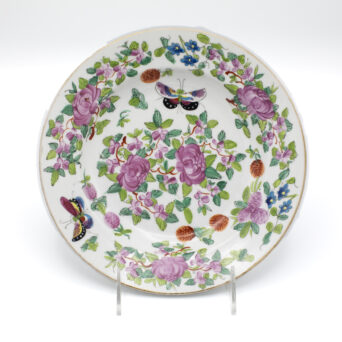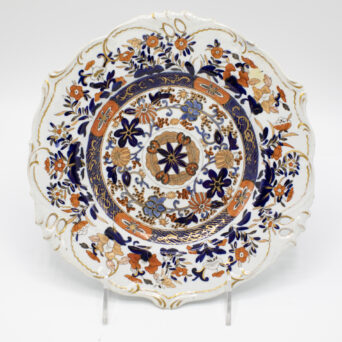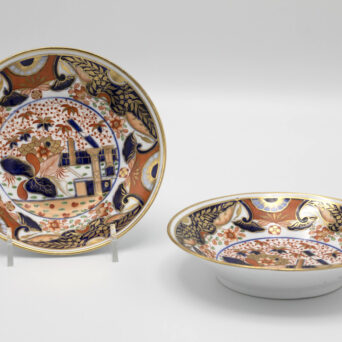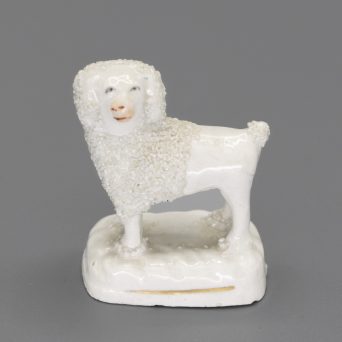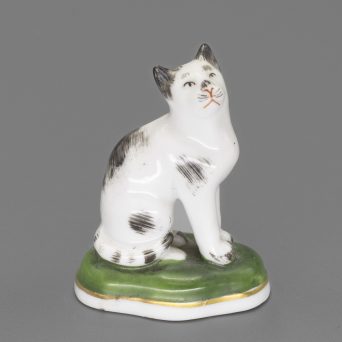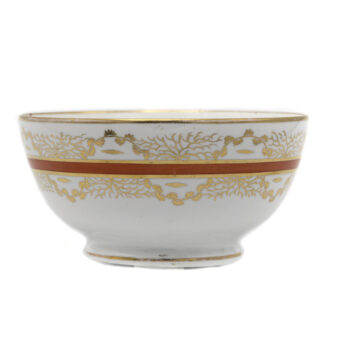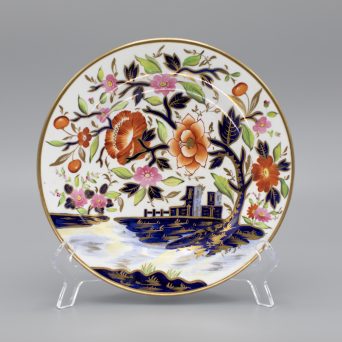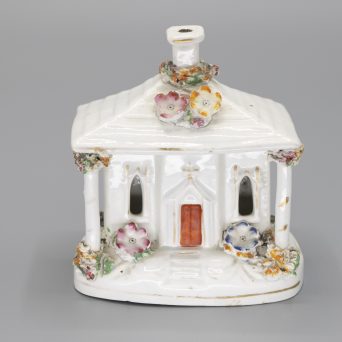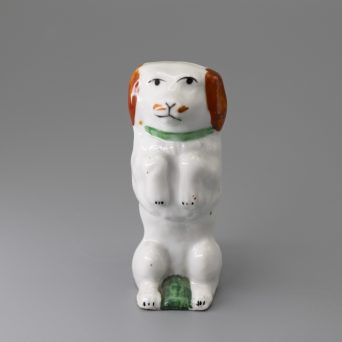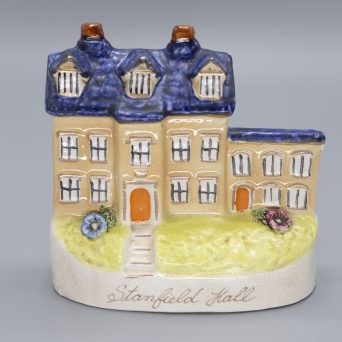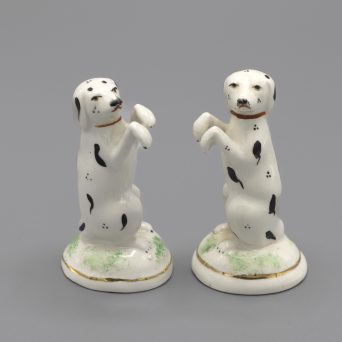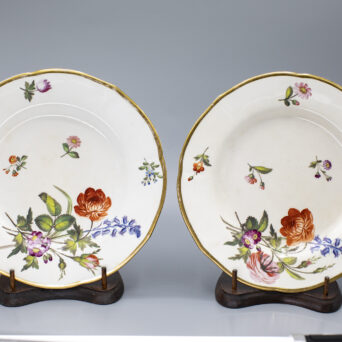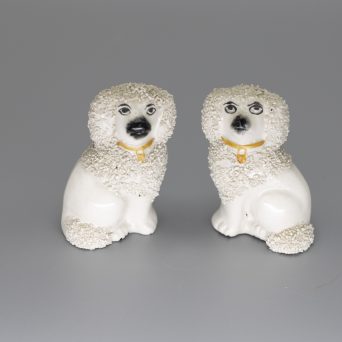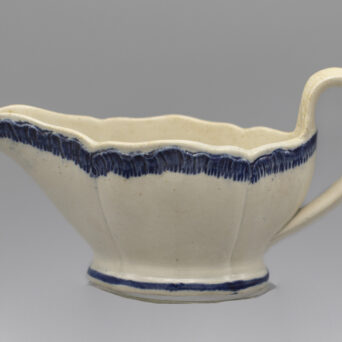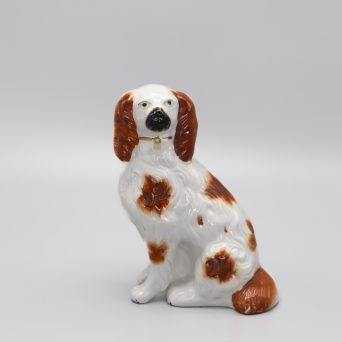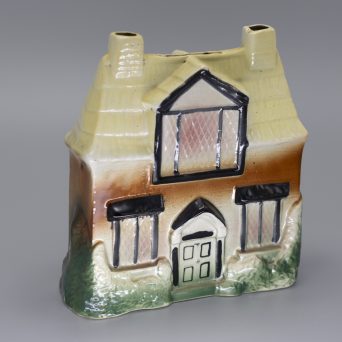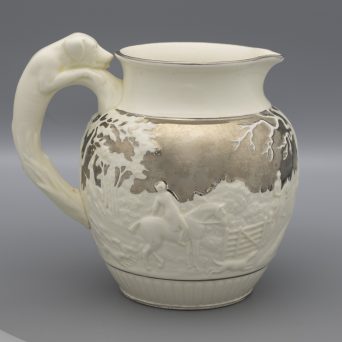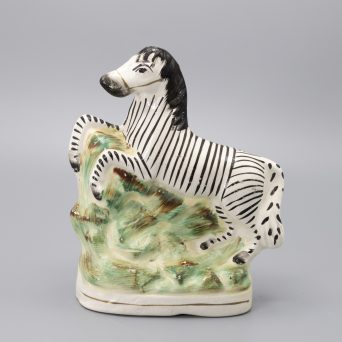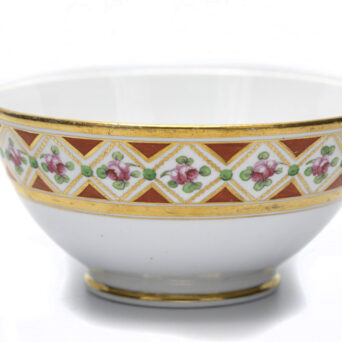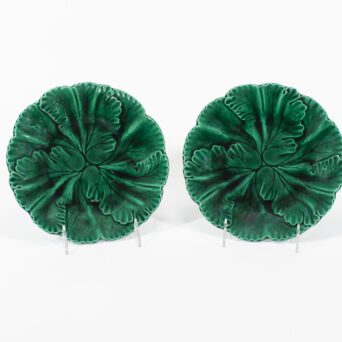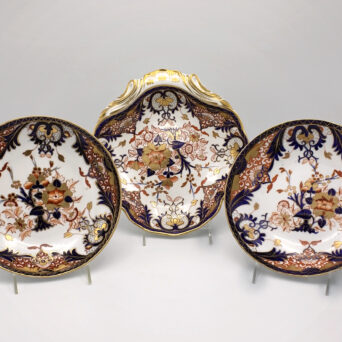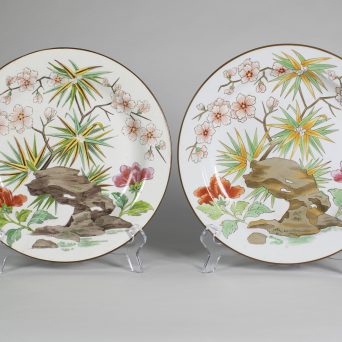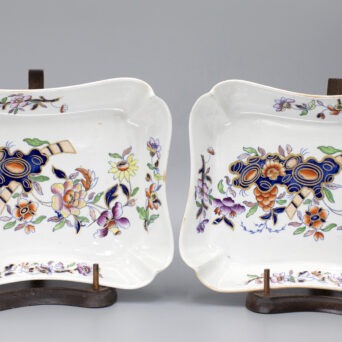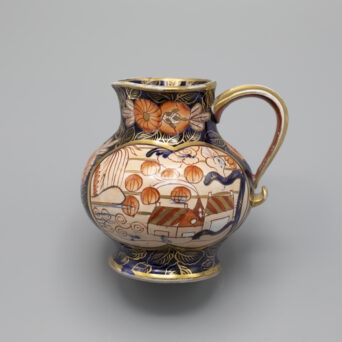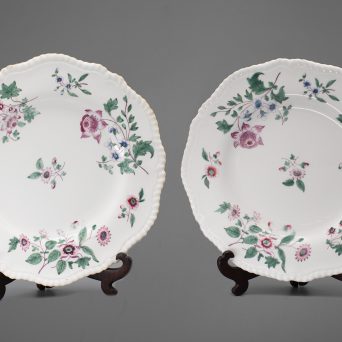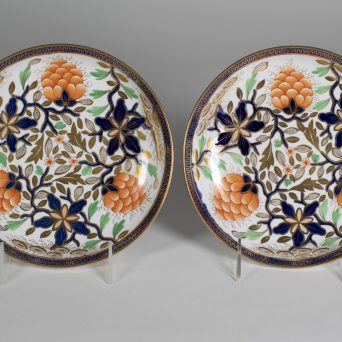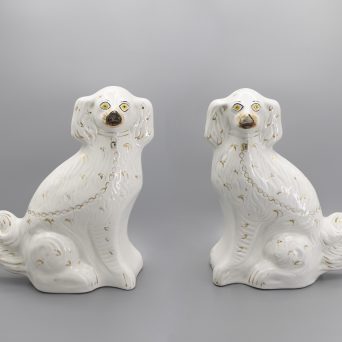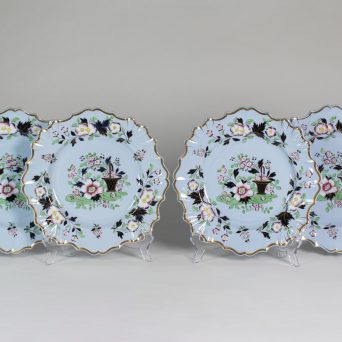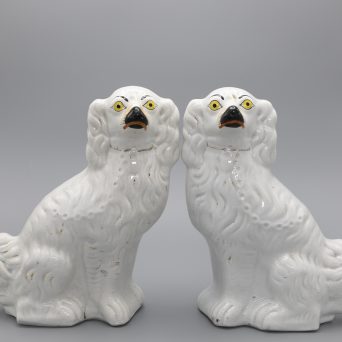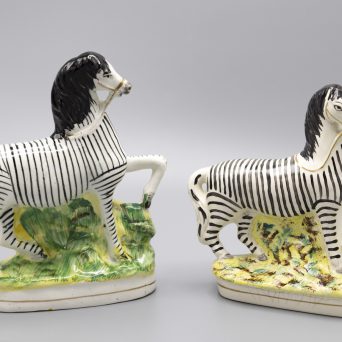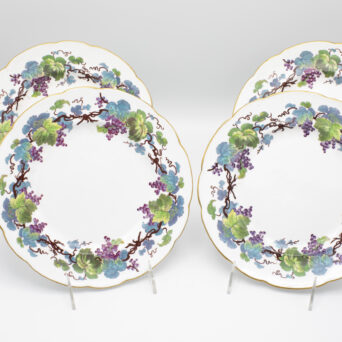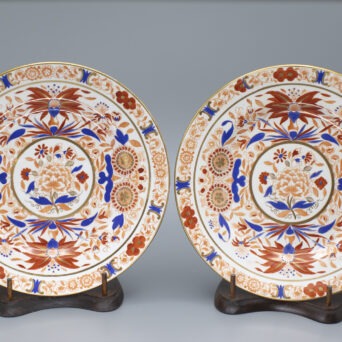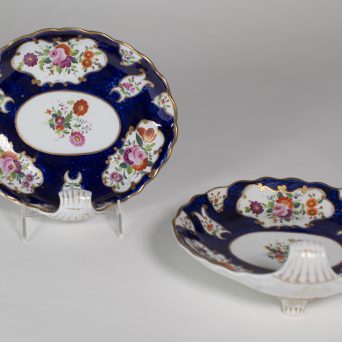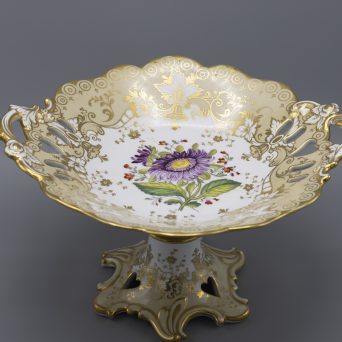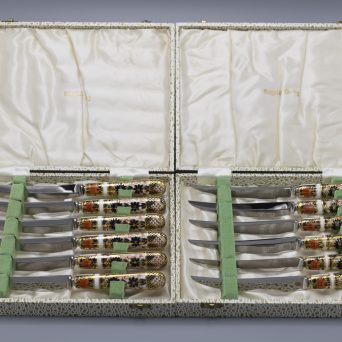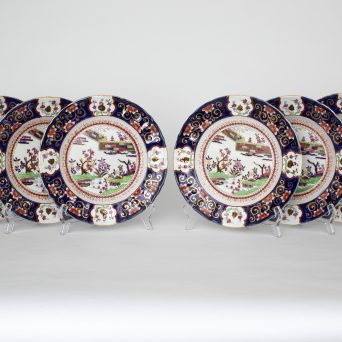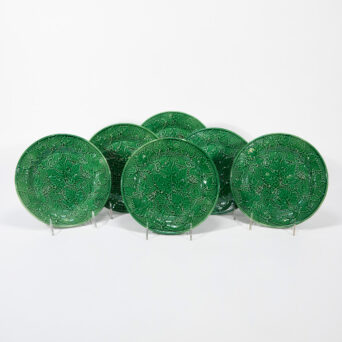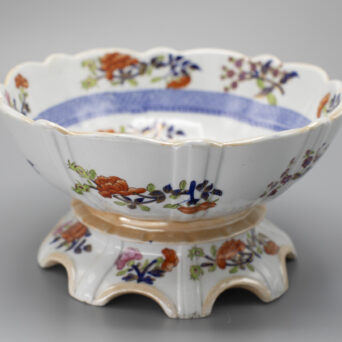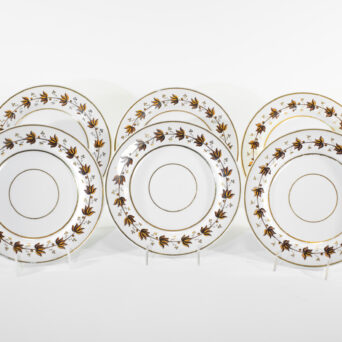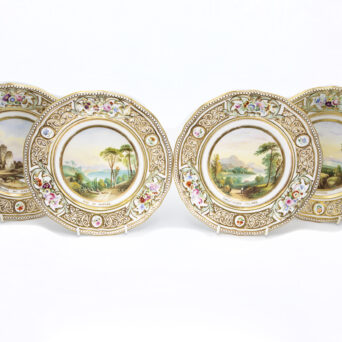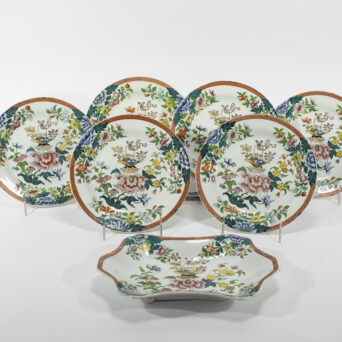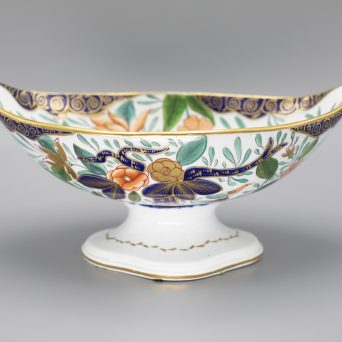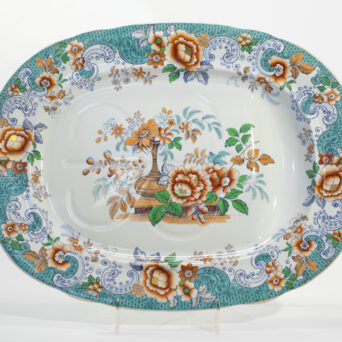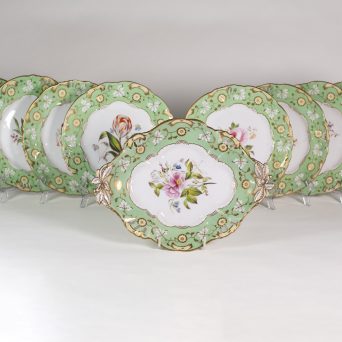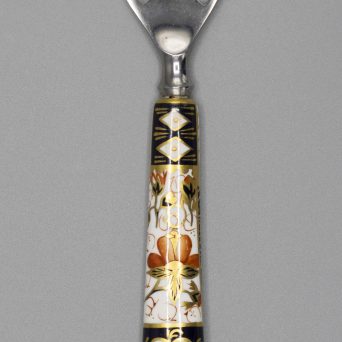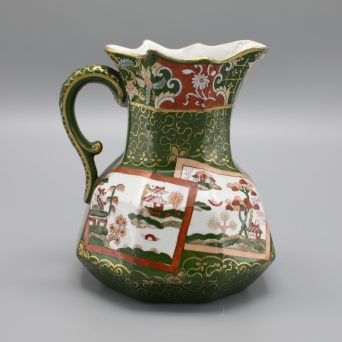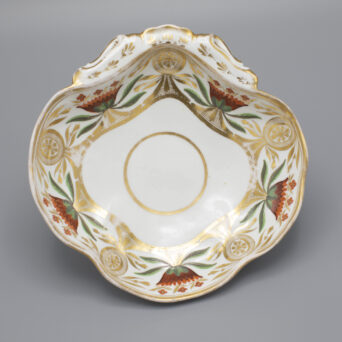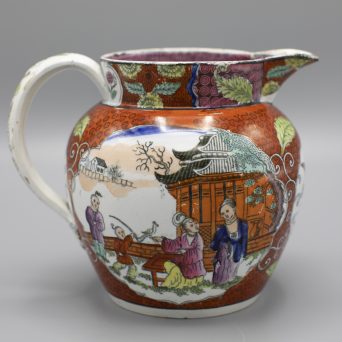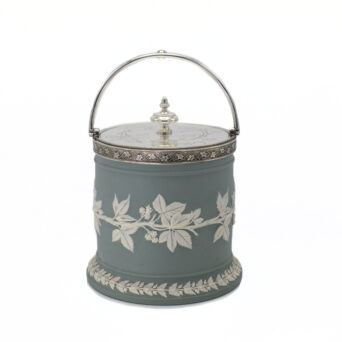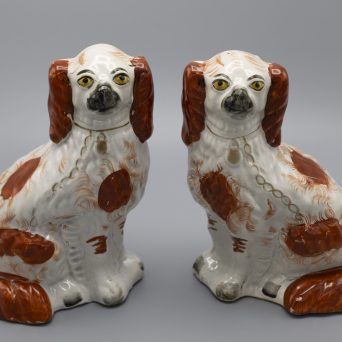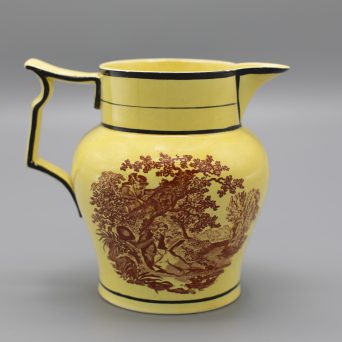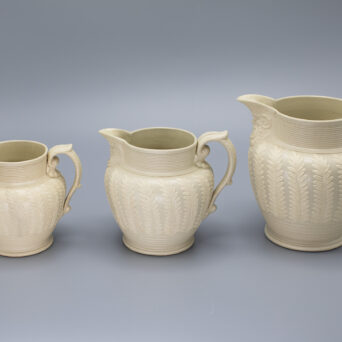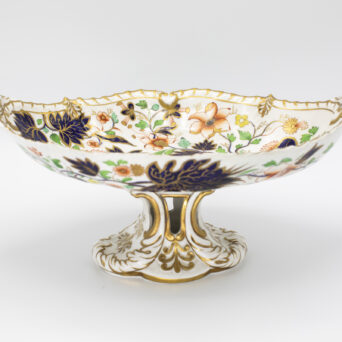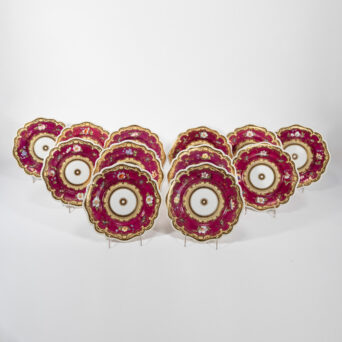Below, please find several English Porcelain Manufacturers that were quite important in the 18th, 19th, and 20th centuries. Their workmanship was exceptional and therefore, their influence and designs are still prevalent and sought after today.
Coalport
The Coalport Porcelain Company was established in Coalport, Shropshire, England in 1795. In the late 18th and early 19th centuries, the company gained recognition and popularity for its high-quality and beautifully crafted porcelain pieces. Coalport porcelain is highly regarded for its fine craftsmanship, delicate designs, and rich and vibrant colors. An interesting feature is that before 1805, marks were rarely used on pieces of Coalport porcelain. This continued until 1820 when they began to identify their pieces. This can cause it difficult to identify the maker as being Coalport and thus can only rely on color and design.
Some notable and famous Coalport patterns and styles include the Imari inspired Japan patterns, the botanical inspired Regency period designs, and the later Victorian era patterns which feature intricate floral motifs and romantic scenes.
Davenport
Davenport and Company (1794 – 1887) was founded by John Davenport in 1794, and around 1800, began producing porcelain, tableware, and vases. By 1810, Davenport was one of the first factories to produce bone china which is a type of porcelain that is made from bone ash, feldspar, and kaolin. The company also developed a technique for producing transfer printed pottery. This allowed them to produce a wide range of intricate designs on their ceramics. The company was also highly regarded for its technical skill and innovation. During the 19th century, the company was one of the largest pottery businesses in Britain and flourished there as well as exporting overseas.
Mason’s Ironstone
The first thing to know about Ironstone is, it is not porcelain. Likewise, there is no iron in its composition. It is porous earthenware and made of clay mixed with feldspar. Ironstone is known for its durability and strength. It also tends to be heavier than any other forms of porcelain and pottery. Founded and patented in 1813 by Charles James Mason in Staffordshire, England, it became an immediate success and provided a less expensive substitute for Chinese porcelain. At first, the decoration was a kind of chinoiserie, or hybrid Oriental. Eventually, other designs were used. Out of all the ironstone that was produced at this time, Mason’s has always been considered the most popular. Mason’s specialized in vases of all sizes, large dinner services, and jugs with elaborate decoration. When ironstone is marked, it is either with a stamp on the bottom that is printed, or an impressed mark or sometimes both.
Minton
Established in 1793, Minton is an iconic British ceramics manufacturer. This company has a legacy of producing fine bone china, earthenware and porcelain items for over two centuries. Pieces made by Minton have graced the tables of nobility as well as being coveted by collectors worldwide. Founded in 1793 by Thomas Minton in Stoke-on-Trent, England, Minton Pottery quickly became synonymous with excellence in ceramics. In its early years, the company gained royal patronage for its hand-painted porcelain and bone china. The Minton factory was one of the most popular sources in the 19th century for dinnerware made to order. This was usually commissioned for embassies and for the heads of state. The name continues to the present day as part of the Waterford, Wedgwood and Royal Doulton Group.
Ridgway
The Ridgway family was a significant dynasty in the production of English Staffordshire pottery from the 1790’s to the 20th century. It was first produced by the brothers Job and George Ridgway in 1792 in North Staffordshire, England. Despite family tensions, the Ridgways continued to produce their high quality pieces which peaked in the mid-19th century. Ridgway produced their wares predominately for the middle and upper classes. This included earthenware, stoneware, and bone china. Many of their pieces focused on elaborate designs and often featured the color cobalt blue. Ridgway Porcelain eventually merged with the Booths & Colclough China Company during the 1940’s and later became part of the Royal Doulton Family in 1972.
Royal Crown Derby
Founded in 1750 by Andrew Planche and William Duesbury in Derby, England, the Royal Crown Derby Porcelain Company is one of the oldest original English manufacturers of fine bone china. Dating from the Georgian era, it has operated for more than 260 years. In 1761, the company, then called Derby Porcelain, created its first commemorative piece for the coronation of King George III. In 1775, the King recognized the uniqueness and high quality of Derby Porcelain, giving the company the honor of using a crown on its back stamp. In 1811 Robert Bloor took control of the company bringing back many of the skilled artisans who had left earlier. Many lustrous and ornate adaptions of the Oriental patterns were added to the Derby style and became much sought after. Queen Victoria bestowed another honor to this porcelain manufacturer in 1890, when she awarded the company a royal warrant and gave it the title, “The Royal Crown Derby Porcelain Company”.
Spode
Josiah Spode II (1755 – 1827) was the great Pioneer among the potters in England during the Georgian era. He continued in the family business after his father passed away in 1797. By the year 1800, he had perfected the bone china recipe and was also instrumental behind the technique of transferware. In 1805, he entered into partnership with William Copeland. The firm made it possible for English potters to replace Chinese export China with the new and popular English porcelain. This helped bring about the end of the need and desire for Chinese Export Porcelain. And yet, they copied some of the Chinese designs as well as making many new ones of their own. In approximately 1822, Spode introduced an adapted stone china called “New Stone”. In 1833 the business was bought by Copeland and Garrett. This company with its porcelain and ironstone constituted a thriving industry providing half the world with their tableware.
Staffordshire
The popularity of Staffordshire’s porcelain and pottery is a testament to their beautiful craftsmanship. Their figures have always been captivating even from the very beginning which was in the 18th century in Staffordshire, England. Crafted by skilled artisans, the manufacturing process involves molding the clay into various shapes and then applying intricate hand-painted details to them. They are then placed into a kiln which is thermally insulated chamber that produces high temperatures to harden, dry, or change materials. Many of these figures that were produced were often decorative pieces such as animals and cottages and are still quite popular today.
